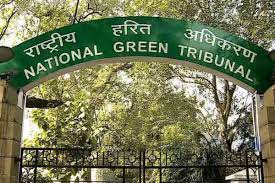NEW DELHI: Even as landslides hit Shimla killing more than 25 people, the Himachal Pradesh Government remains engaged in a legal battle in the Supreme Court against an order of the National Green Tribunal (NGT) that asked it to follow environmental norms in formulating its development plan for the state capital.
Notified in June this year by the Himachal Government, the draft Shimla Development Plan, “Vision 2041”, seeks to regulate construction activities, including the number of floors, habitable attic and garage in a building. It allows construction with certain restrictions in 17 green belts, including in the core area where construction activity was banned by the NGT. Two floors with a habitable attic and parking in core areas and three stories with parking and a habitable attic in non-core areas would also be permissible. Responding to the Himachal Pradesh Government’s Town and Country Planning Department’s application dated July 24, Yogendra Mohan Sengupta – on whose plea the NGT had passed the order – has told the top court that the NGT had in its November 16, 2017, order flagged Shimla’s vulnerability to natural disasters and the additional uncontrolled constructions which was making the situation worse.
The NGT had said that by allowing and undertaking constructions in the ecologically fragile areas, the sustainable development and precautionary principle along with the public trust doctrine had been violated, increasing the vulnerability of Shimla to man-made and natural disasters.
Such unplanned and indiscriminate development in the core, non-core, green and rural areas within the Shimla planning area had given rise to serious environmental and ecological concerns, the NGT had noted.
Sengupta said the state government had approached the high court but there was no stay on the NGT order. “The state of Himachal Pradesh, instead of preparing a development plan by adhering to the directions issued by the tribunal, prepared a draft development plan in contravention of the directions given by the tribunal,” he submitted.
On October 14, 2022, the NGT had stayed the Shimla Development Plan approved by the previous government in February 2022, terming it illegal and in conflict with earlier orders passed in 2017 to regulate haphazard construction.
The state government had challenged this order before the HC, and now it is before the top court.
“The final development plan is, therefore, clearly in violation of the judgment and directions given by the tribunal on 16.11.2017 and order dated 14.10.2022 and directly infringes on the rule of law,” Sengupta submitted.
The final Shimla Development Plan can’t be acted upon unless the top court issues appropriate directions in consonance with the principle of sustainable development and precautionary principle, Sengupta contended.
A Supreme Court Bench led by Justice BR Gavai – which had on July 28 emphasised the need to maintain a balance between development and environment – is likely to examine the draft Shimla Development Plan on August 22. It had on July 12 permitted the state government to place on record the final development plan.


